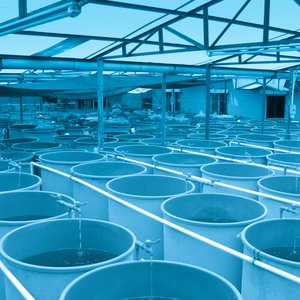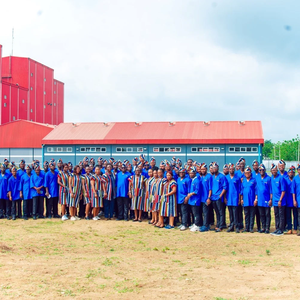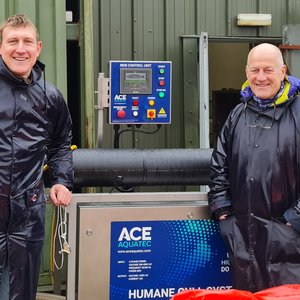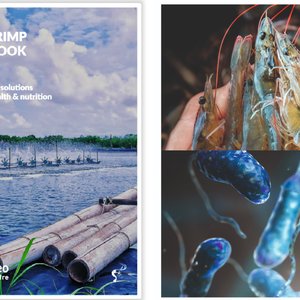At the Global Shrimp Forum that took place in September in Utrecht, the main discussions were focused on the current low shrimp price crisis and how to make the industry more profitable and more resilient.
The increase in shrimp production in the past few years is not being followed by increased consumption and, together with other issues, is making shrimp farmers struggle with low prices due to the oversupply. Willem van der Pijl, co-founder and managing director of Global Shrimp Forum, presented recent trade data from different regions. Since 2016, shrimp exports have been on the rise mainly driven by India and Ecuador. As the main import drivers, China and the US have absorbed most of the growth of global shrimp production. However, the outlook is subject to change.
Ecuador
Ecuador's shrimp production has increased 22 times in the past 20 years, said Yahira Piedrahita, executive director of the National Aquaculture Chamber, at the forum. Despite this growing trend, it seems the current situation is also impacting the country’s production.
“At the start of COVID, prices went down in the country, then they recovered and fell again in 2022 and it is not clear that the bottom has been reached,” van der Pijl said. “Overall, the quarterly year-on-year growth trend in exports slowed down slightly in 2022 and also in the first quarter of 2023.”
“The recent increase in production in the country was driven by genetics and biosecurity, increased technification and improved feeds. The growth that we are seeing now is mainly from the larger companies that are more profitable and can invest. Due to low prices, medium and small-scale farmers are not able to invest in technification and increase their efficiency,” Piedrahita said.
India
India's production is expected to decrease, despite trade data depicting a situation different from the real narrative. India exported more in Q1 2023 than in 2022 and declined in Q2 and exports are expected to be reduced in the second half of 2023, according to van der Pijl. The only data from real production is broodstock imports which have declined by 30% in H1 2023.
Sree Atluri, director of operations at Devi Seafood, confirmed the predictions. “Production in the country has been in a lower downtrend mainly driven by low production densities and unpredictable pricing. We expect a reduction in the second half of 2023 by at least 15%.” Atluri also predicts that black tiger shrimp will increase production by doubling its capacity.
“Indian farmers are reducing density at ponds, from 35-45 pieces per m2 before the price crisis to 15-25 pieces per m2 trying to grow larger shrimp,” said Ravikumar Yellanki, managing director of Vaisakhi BioMarine Private Limited and Vaisakhi Bio-Resources Private Limited.
“To sustain India’s growth momentum, the country needs to increase domestic shrimp consumption, diversify species such as SPF black tiger shrimp and indicus, improve management and diagnostics to boost profitability and defend its cost structure through policy intervention and build efficiencies,” said Ramakanth Akula, CEO of the Waterbase Limited.
Vietnam
Production in Vietnam is also expected to fall. Exports to Vietnam’s five biggest export markets – China, South Korea, EU, the US and Japan – were down 31% year-on-year in Q1 2023 and down 39% in Q2 2023, according to mirror data exports presented by van der Pijl.
Discussing what the country’s needs and challenges are, Loc Tran, founder and director of ShrimpVet, said that farmers need to increase professionalism and consolidation. “Vietnamese farmers are very fragmented and they are now realizing that they can’t stand individually. Farmers are starting to set up SMEs so they can get the environmental impact assessment and certification,” said Tran.
To support them, Tran set EcoSeafood Group (ESG), a spin-off of ShrimpVet to create a shrimp module with a standardized design and operation to run at scale. The first module is a 2,000-MT production farm, expandable, that can be licensed to shrimp farmers.

From left to right: Sander Visch from Kontali, Alexander Farthing from Delos, Loc Tran from ShrimpVet, Lorenzo Juarez from Hendrix Genetics and Ravikumar Yellanki from Vaisakhi Bio-Marine Private Limited. Credits: Pierre Banoori
Indonesia
In 2023, Indonesian vannamei exports dropped by 23% in Q1 and 15% in Q2. The decline is caused by the Indonesia vannamei exports being extremely dependent on the US (67%) which imports were reduced.
The Indonesian shrimp industry has been moving to intensification. “Intensification and data management allow farmers to harvest at the right time avoiding losing as much money as possible,” said Ari Utama, director, head of sales & marketing at BMI. But it also brings higher costs and diseases that had impacted the domestic production.
“We need to get farmers to get more business-minded. We see different levels of professionalism in farmers between the first, second and third generations. We are moving towards more cost-conscious farming in the country,” said Alexander Farthing, chief scientific officer at Delos.
China
The shrimp production landscape in China was referred to as a “black box” with little output of trade data. Fu-Ci Guo, global aquaculture category manager, at Agrifirm, shared some data recently gathered to shed some light on the country’s production
China’s shrimp production is mainly in earthen ponds (52%), elevated ponds (15%) and large and small greenhouses (30%), according to Guo. But shrimp RAS farms in China are an emerging trend. RAS farms produce 4-10 times higher than in small greenhouses. Currently, there are eight RAS farms from CP, Tongwei, Haida and Evergreen that account for 2 million m3 – 70,000 MT (2-3% of total production), Fuci mentioned. Tongwei recently invested RMB 1.2 billion in Shandong Dongying with a targeted production of 10,000 MT in 2023 and 1 million MT in 5-10 years.
The Chinese government is favoring more eco-friendly farming, subsidizing activities that use less land, water and less wastewater, so according to Guo, RAS farms will gain momentum.
Despite this, costs are still an issue. “The cost of production from earthen ponds is 3.4 USD/kg, elevated pond and greehouses 4.0, shrimp factories 5.1 and Ecuador farm 2.5. Ecuador recently signed a free trade agreement with China that includes shrimp so Chinese farmers are at a clear disadvantage,” Guo said.
Bangladesh
In Bangladesh, extensive farming constitutes 99.9% of shrimp farming with a total area of 262,980 ha from which around 190,000 ha are dedicated to black tiger shrimp, according to data presented by Shyamal Das, manager director of M. U. Sea Foods Ltd. Farmers have a lack of SPF fry, insufficient pond infrastructure, lack of essential testing facilities, loan opportunities and low success ratio.
Despite other countries focusing back on black tiger shrimp, Bangladesh is introducing vannamei. “We need more shrimp to cater to our industry as well as for our domestic market. Shrimp factories are currently operating at 30-35% capacity and shrimp export earnings hold the 7th position whereas they used to be the 2nd. Increasing vannamei would meet the local market needs and black tiger shrimp would help increase the country’s export earnings,” Das said.
But transitioning to vannamei requires addressing several challenges, such as adequate land for intensive and semi-intensive practices, capacity building, electricity availability and finance. Das expects an increase in black tiger and freshwater shrimp production in the next three years but the significant increase is expected in vannamei from 0 to 30,000 MT.
Promoting global shrimp consumption
In the past few years, the industry has made significant strides in enhancing production efficiency, but the growth in shrimp production needs to meet with a corresponding increase in demand. To solve this gap, more than 20 shrimp producers have held talks during the forum to create the Global Shrimp Council to promote and grow shrimp consumption around the world by providing meaningful information about the industry. The organization aims to be producer-driven and could be established within the National Fisheries Institute (NFI) in the US.
A similar strategy was followed in recent years by the avocado industry which was facing a similar situation as the shrimp industry with low prices, low consumption and increased production. Allan Cooper shed light on how the avocado industry's marketing model could set an example for future unified shrimp marketing initiatives.
“In a scenario where demand grows because people love shrimp, supply could catch up with demand. This scenario, with a higher demand, will bring more stable prices, more confidence throughout the value chain and better conditions to invest and an even better product,” said Arnd Jan Gulmans, independent marketing and branding consultant at AJ Gulmans.
Sandro Coglitore Castillo, general manager of Omarsa, said that “as an industry, we need to grow demand and start thinking to promote shrimp as a generic product, not locally, and grow the main markets and level up that boom-bust feed.”
Gulmans highlighted that protein habits are changing currently and it is an opportunity for shrimp, but the industry needs to set the most effective storyline for shrimp promotion.










